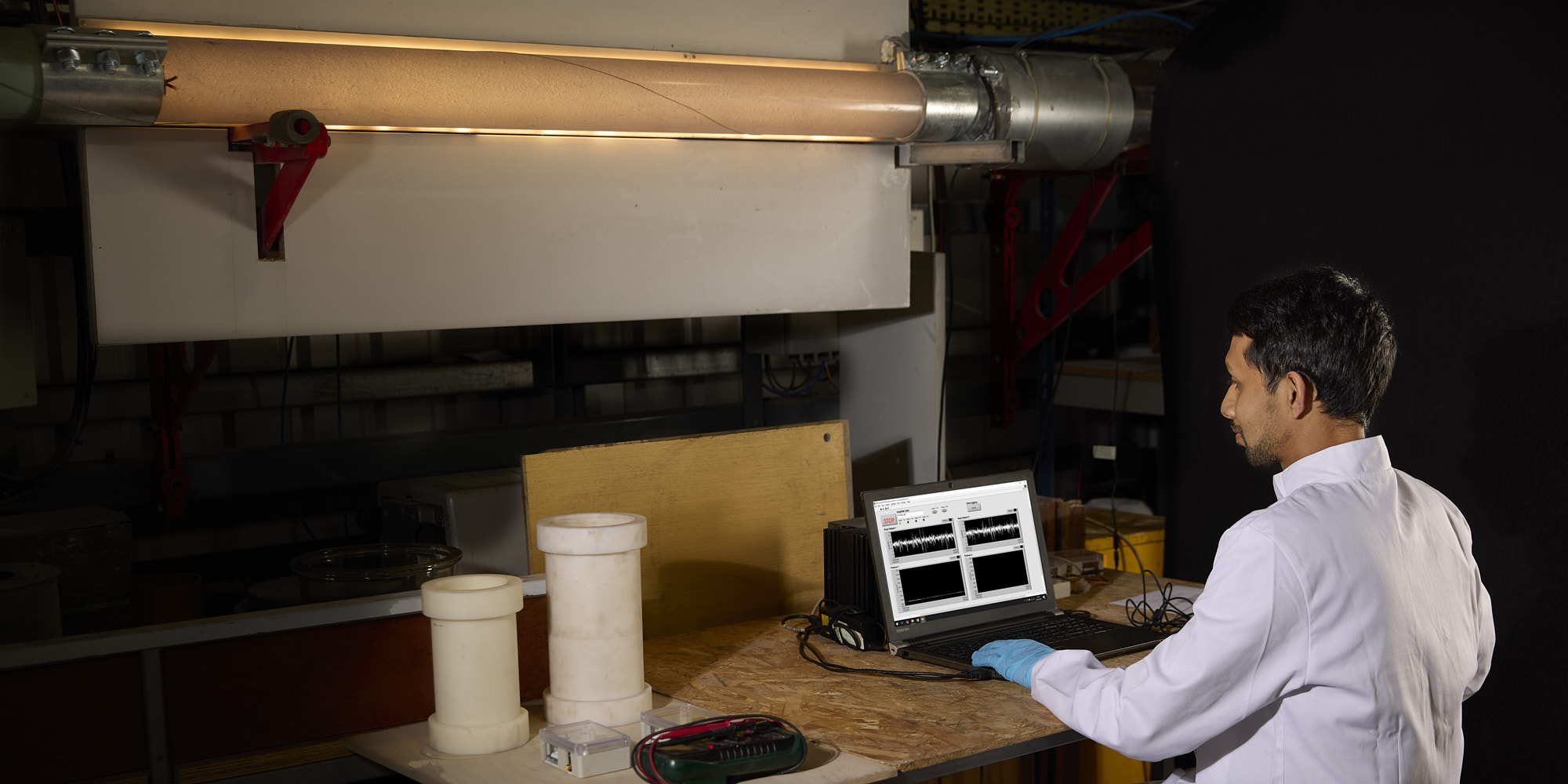Enhancing efficiency of dense phase conveying of powders to facilitate reductions in carbon emissions from in-plant transport of ingredients and products in food, chemicals, minerals and other industries.
This project is led by Dr Atul Sharma, assisted by Prof Mike Bradley
Researcher: Chehan Yapa
Pneumatic conveying is desirable for food and pharma, due to cleanliness, sanitation, and flexibility of routing. However it is expensive in energy (20 times belt conveying). Globally it is estimated to use as much energy as motor cars do.
Reducing energy in pneumatic conveying is therefore critical. One significant means is to change from lean phase conveying (suspended in high air velocity ~25-40 m/s), to dense phase conveying (~3-8 m/s in full bore slugs); this can save up to 70% of energy.
However the mechanics of slug transport are poorly understood. Some materials naturally support slug flow, whereas others block the pipe when slugs form; also, pipeline geometry appears to have an effect, especially pipe bends. The ability to negotiate bends is a major advantage of pneumatic conveying, so to apply dense phase conveying more widely to reduce power consumption, the effects of pipeline geometry including bends and their interaction with the properties of the conveyed materials, must be better understood. Previous work on bends is mostly limited to lean phase.
The industry sponsor has pilot plant data that hints at the importance of the geometry of the bends in this regard. However this has not been explored exhaustively; the behaviour of different materials is very different, but the role of the fundamental properties of the conveyed material (particle size distribution, shape, cohesiveness, friction, surface energy etc) are completely unclear.
Aim and objectives
To improve understanding of slug behaviour in dense phase conveying, in particular in relation to interaction between material properties, pipeline geometry and air control, and to enshrine this understanding in a predictive model.
Qlar (formerly the Schenck Process Group) are part-funding this project.
